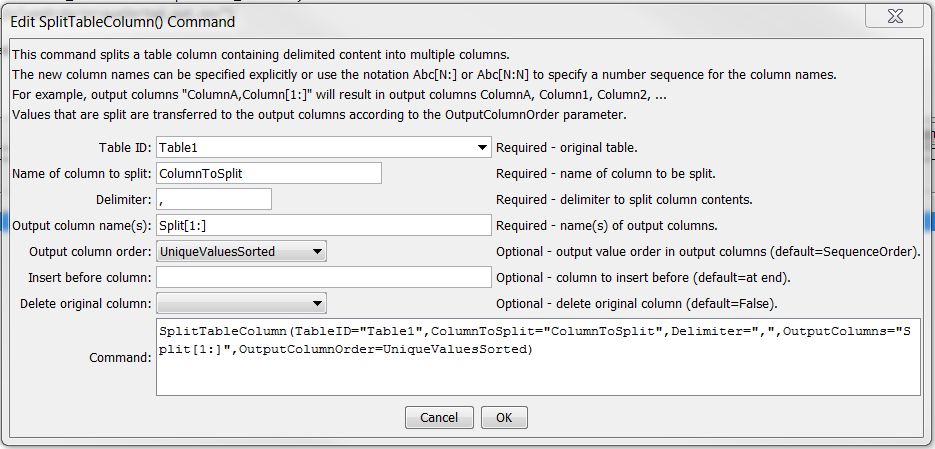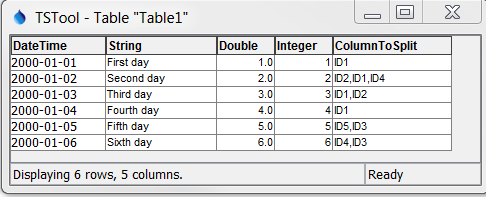TSTool / Command / SplitTableColumn
Overview
The SplitTableColumn command splits a string (text) column in a table into multiple columns.
Currently the only delimited string values can be split.
For example, the ColumnToSplit column in the table shown in the following example
can be split to produce the result in the second figure. Several options for splitting are available.
Command Editor
The following dialog is used to edit the command and illustrates the syntax of the command.

SplitTableColumn Command Editor (see also the full-size image)
Command Syntax
The command syntax is as follows:
SplitTableColumn(Parameter="Value",...)
Command Parameters
| Parameter | Description | Default |
|---|---|---|
TableID |
The identifier for the table. | None – must be specified. |
ColumnToSplit |
The name of the table column to split. | None – must be specified. |
Delimiter |
The delimiter character for splitting the values in the split column, for example a comma. | None – must be specified. |
OutputColumns |
The names of output columns to be inserted, separated by commas. Specify literal column names or use the notation:
For example, to generate output columns with names Column1, Column2, ... for all necessary output columns, use: Column[1:] |
None – must be specified. |
OutputColumnOrder |
The order of split values in output columns:
SequenceOrder |
|
InsertBeforeColumn |
The name of the column before which to insert the new output columns. | Append at end |
DeleteOriginalColumn |
Indicate whether the original table column should be deleted after processing: False or True. |
False |
Examples
See the automated tests.


Troubleshooting
See Also
FormatTableStringcommandManipulateTableStringcommandSplitTableRowcommand